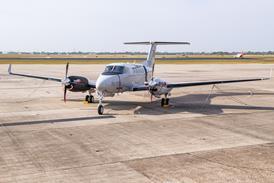Deformation of a section of helicopter rotor blade by a battery-actuator is to be demonstrated later this year by Massachusetts Institute of Technology (MIT) researchers. The eventual goal is to control a rotor by warping the blades.
MIT materials science and aeronautics researchers have demonstrated basic battery-based actuators that can pull and push with large forces. Ion movement during charging and recharging causes the battery to expand and contract.
“On a weight basis the mechanical energy is higher for this than any other electrically operated method. It’s on a par with shape-memory alloy [SMA],” says MIT professor of materials science and engineering Yet-Ming Chiang. The primary limit on the force a battery-actuator can produce is its ability to withstand the stresses involved, he says.
Chiang expects the actuator to outperform SMAs,which are temperature specific so have limited operational flexibility.
Source: Flight International























